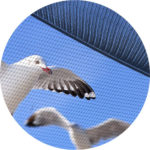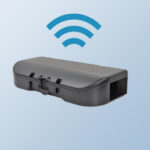When we teach the RK Environmental Services team about IPM or food safety, it’s always easiest for them to understand when we simplify our message. And we want to do the same for our clients.
For food safety, we can make things clearer by breaking down the broad topic into categories such as employee practices, facility maintenance, sanitation and IPM.
For the IPM category, we can break that down into pest risks – insects, rodents and birds. Our focus in this article is birds – a pest that has garnered significantly more attention from auditors and inspectors as a result of mandates of the Food Safety Modernization Act – and a better understanding of bird management strategies.
World-wide there are 10,000 species of birds, and over 900 in North America, but only three are not protected by the Migratory Bird Treaty Act – the pigeon, sparrow and starling.
The migratory bird treaty act was originally enacted in 1916 between the United States and Canada to protect birds that migrate, and its original purpose was to end the commercial trade of bird feathers.
Birds present a unique challenge in commercial facilities since they can easily travel between facilities that are miles apart and deliver harmful bacteria (in their droppings) including listeria, E. coli and salmonella.
These threats do not only come from birds inside a structure but can be brought indoors on shipments of unprocessed food, on shipping pallets and containers or even on the soles of an employee’s shoe.
The first step in any successful bird management program is to conduct an assessment that identifies conditions promoting bird activity in and around the facility. We involve our clients in the assessment process since their participation is an important part of any successful bird management program.
Key components of the assessment include:
- Conducive conditions including open dumpsters and product spillage
- Modify bird habitats and nesting locations including removal of trees when applicable
- Formulating a strategy based on bird pressure in and around the facility
Following the assessment and when the appropriate strategy has been determined, RK Environmental Services deploys the latest bird exclusion and management technology. These categories include:
- Population reduction or harvesting
- Exclusion including netting, bird-shock, spikes and gull wire
- Visual deterrents including optical gel, scare-eye balloons, strobe lights, reflective tape, predatory bird statuary, etc.
- Sound and taste deterrents
Bird management is an important element to any facility’s pest management and food safety program and you can rely on the professionals at RK Environmental Services to provide an innovative and comprehensive solution.














